When Mold Strikes: The Critical Decision Between Cleaning and Complete Material Removal
When homeowners discover mold in their property, one of the most challenging decisions they face is determining which items can be saved through cleaning and which must be completely removed. This crucial choice can mean the difference between preserving cherished belongings and protecting your family’s health. Understanding the factors that determine whether mold-damaged items are salvageable is essential for making informed decisions during the remediation process.
The Science Behind Mold Penetration
Absorbent or porous materials, such as ceiling tiles and carpet, may have to be thrown away if they become moldy. Mold can grow on or fill in the empty spaces and crevices of porous materials, so the mold may be difficult or impossible to remove completely. This fundamental principle from the EPA guides most professional decisions about material removal versus cleaning.
You cannot completely disinfect porous materials that are moldy, such as carpets, fabric, or drywall (gypsum board). You must remove them. The porosity of materials is the primary factor that determines their salvageability after mold contamination.
Items That Can Often Be Cleaned and Saved
Not everything exposed to mold needs to be discarded. Not all items may need to be discarded. Non-porous items can often be cleaned and sanitized. Hard surfaces typically respond well to cleaning efforts.
Cleaning furniture items after mold exposure depends on its material type. Follow these steps if your hard-surfaced item is made of laminate, wood, veneer, steel, resin, or bamboo: Start by removing mold spores with a damp cloth and mild non-phosphate detergent. These materials have smooth surfaces that don’t allow mold to penetrate deeply, making them easier to clean effectively.
Larger Electronics and Appliances: In the instance that your large electronics and appliances have only experienced limited exposure to mold and have been thoroughly cleaned, you can keep them. Keep in mind, though, that mold could have damaged the appliances’ electronic systems, which could prove problematic for the proper functioning of your appliances once you are ready to use them.
Items That Must Be Removed
Certain categories of items pose too great a risk to attempt cleaning. Porous Items: Mold can cause considerable damage to items with porous surfaces, such as cardboard, carpet, upholstered furnishings, padding, stuffed animals, and mattresses and box springs.
Paper Material: If visible mold is present on paper materials, you will need to throw out, including books, albums and photographs, or craft materials. Food and Food Appliances: Both food and food appliances in your home that has come in contact with mold should be removed and thrown away.
Damaged items should be thrown away without question, and items that are easy to replace or inexpensive (i.e. clothes, food) should be tossed as a precautionary measure. This approach prioritizes health and safety over potential financial savings.
Professional Assessment Makes the Difference
Making these decisions requires expertise that most homeowners don’t possess. If you are unsure about how to clean an item, or if the item is expensive or of sentimental value, you may wish to consult a specialist. Specialists in furniture repair, restoration, painting, art restoration and conservation, carpet and rug cleaning, water damage, and fire or water restoration are commonly listed in phone books.
For residents in Bucks County, Pennsylvania, professional Mold Removal Services in Bensalem, PA can provide the expertise needed to make these critical decisions. Mack’s Mold Removal & Inspections is a leading company in the field, specializing in high-quality mold removal and inspections. With years of experience and a team of trained professionals, we are committed to providing exceptional services and ensuring the safety and well-being of our clients.
The Health and Safety Imperative
This is why many toxicologists recommend homeowners treat moldy belongings ASAP. Basically, it’s better to be safe than sorry. The health implications of mold exposure make conservative decision-making the wisest approach.
Mold damages what it grows on. The longer it grows, the more damage it can cause. Time is a critical factor in both the extent of damage and the likelihood of successful remediation.
Special Considerations for Valuable Items
For paper materials, first make sure the item is completely dry. Removing mold from a wet or damp surface could smear the text. Once dry, use a damp cloth or soft brush with denatured alcohol. Gently try to wipe off the mold or mildew. However, even with careful cleaning, some items may never return to their original condition.
Please note that mold may cause staining and cosmetic damage. It may not be possible to clean an item so that its original appearance is restored. This reality must factor into decisions about valuable or sentimental items.
The Professional Approach
Remediation includes both the identification and correction of the conditions that permit mold growth, as well as the steps to safely and effectively remove mold damaged materials. Before planning the remediation assess the extent of the mold or moisture problem and the type of damaged materials.
Professional mold remediation companies use systematic approaches to evaluate each situation. When it comes to mold, we understand the potential health risks and structural damage it can cause to your property. That’s why we offer comprehensive mold inspections, utilizing state-of-the-art equipment and techniques to identify any signs of mold growth.
Making Informed Decisions
The decision between cleaning and removal isn’t always black and white. Factors such as the extent of contamination, the value of the item, health concerns of occupants, and the material composition all play crucial roles. There are surely some things you need to throw out after they’ve been exposed to mold, but you don’t have to throw everything away. Some items are more durable and can be cleaned.
When facing mold damage, remember that professional guidance can help you navigate these difficult decisions while prioritizing your family’s health and safety. The expertise of qualified mold remediation specialists ensures that you make informed choices about what can be saved and what must go, ultimately leading to a safer, healthier living environment.
